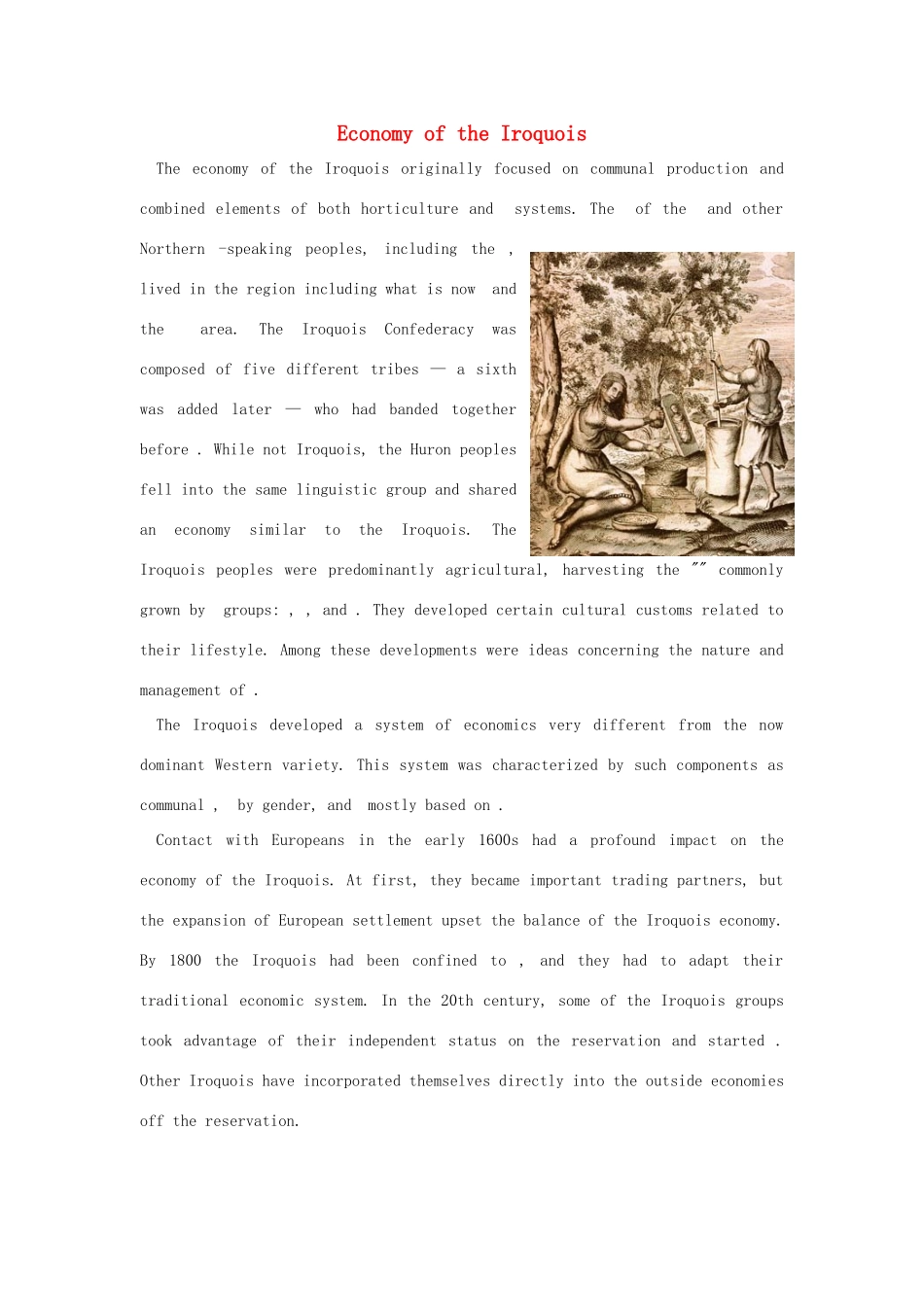Economy of the IroquoisThe economy of the Iroquois originally focused on communal production and combined elements of both horticulture and systems. The of the and other Northern -speaking peoples, including the , lived in the region including what is now and the area. The Iroquois Confederacy was composed of five different tribes — a sixth was added later — who had banded together before . While not Iroquois, the Huron peoples fell into the same linguistic group and shared an economy similar to the Iroquois. The Iroquois peoples were predominantly agricultural, harvesting the "" commonly grown by groups: , , and . They developed certain cultural customs related to their lifestyle. Among these developments were ideas concerning the nature and management of .The Iroquois developed a system of economics very different from the now dominant Western variety. This system was characterized by such components as communal , by gender, and mostly based on .Contact with Europeans in the early 1600s had a profound impact on the economy of the Iroquois. At first, they became important trading partners, but the expansion of European settlement upset the balance of the Iroquois economy. By 1800 the Iroquois had been confined to , and they had to adapt their traditional economic system. In the 20th century, some of the Iroquois groups took advantage of their independent status on the reservation and started . Other Iroquois have incorporated themselves directly into the outside economies off the reservation.
